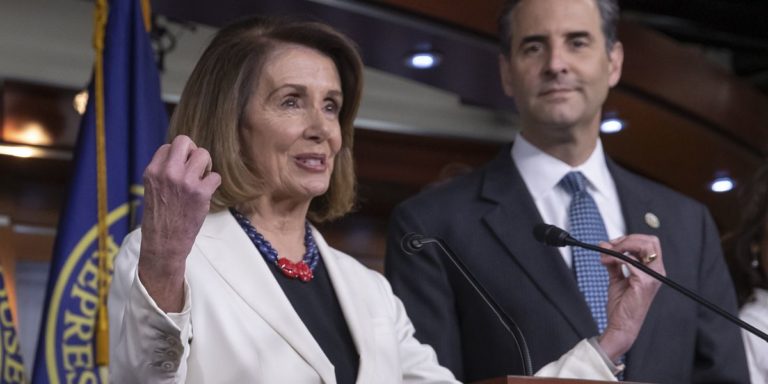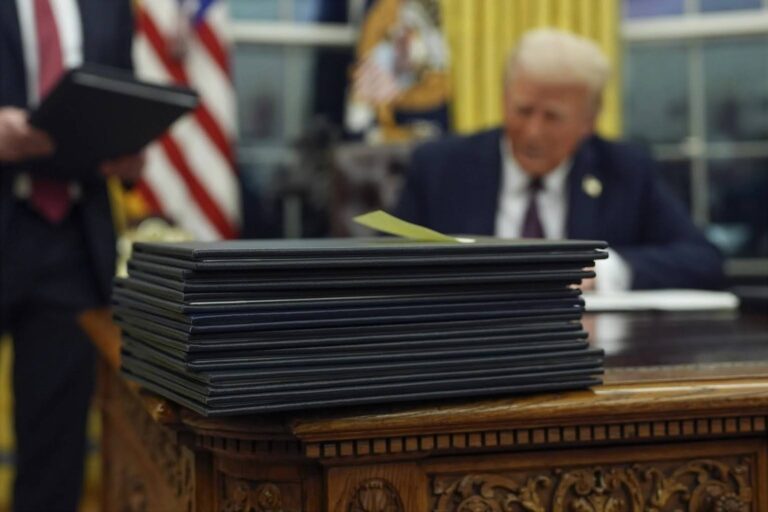As House control is about to switch, it serves as a reminder about Democrats: They like government. And governing.
While tea party Republicans swept to power to stop things — repeal Obamacare, roll back environmental regulations and decrease the size and scope of government — Democrats are marching into the majority to build things back up. And after spending eight downcast years in the minority, they can’t wait to get started.
Just ask Rep. Peter DeFazio. He’s waited 32 years for his chance to become chairman of the House Transportation and Infrastructure Committee, and has a highway and transit rebuilding plan at the ready.
“We’ve got a lot of corked-up energy,” DeFazio said.
Democrats are set to take over the majority on Jan. 3, after capturing 39 Republican-held seats in the November election. But the post-election transition is already playing out in the Capitol, and highlighting a fundamental difference between the two parties, core to their political identities.
Democrats say the goal is not necessarily a return to big government or to quickly start impeachment proceedings against President Donald Trump — but to reassert Congress’ ability to govern, which they say diminished under Republicans.
The incoming chairman of the Rules Committee has drafted a new rules package — the first vote on Day One. It would require most bills to go to committees before a vote, a time-consuming process that shifts attention to the nuts-and-bolts of legislating. The first bill, H.R. 1, an ethics package, is well under way. And star freshman Rep.-elect Alexandria Ocasio-Cortez already organized some two dozen co-sponsors for her “Green New Deal” infrastructure plan.
“We really do want to restore the Democracy, make it work for people,” said Rep. John Sarbanes, D-Md., who is leading the effort on H.R. 1.
“A lot of the tea party people arrived in Washington a few years ago with this mission of tearing government down,” Sarbanes told AP in an interview. “You have Democrats arriving in this class who very much want to fix it, repair it, strengthen it, restore it.”
The Senate will still be Republican-controlled next year, with Trump holding the veto pen in the White House, so it remains to be seen how much — if any — of the Democratic agenda will be passed into law.
But Democrats are pressing ahead, starting their agenda on the premise that Americans have grown cynical of Washington, a finding backed up by polling. Trust in government is low and the sentiment is bipartisan, according to AP VoteCast, a survey of more than 115,000 midterm voters nationwide conducted for The Associated Press by NORC at the University of Chicago. Just 19 percent of midterm voters overall said they trust the government to do what is right at least most of the time. An overwhelming majority — 81 percent — said they trust government “only some of the time” or never.
Democrats say before they start tackling the big issues — lowering health care costs, rebuilding infrastructure — they have to earn back Americans’ trust in government.
The first bill tries to take this on with new ethics requirements and disclosure of big money in politics. Lawmakers would no longer be able to double-dip serving on corporate boards or fly first class, and political groups would have to disclose donors. Congress would make it easier to vote with online registrations and in a nod to President Donald Trump’s reluctance to make public his tax returns, all presidents would have to do so.
“If we are going to accomplish the bold, aspirational things that everybody wants in America, what we’ve heard from our constituents about, we have to have a government they can trust,” said Rep.-elect Veronica Escobar, D-Texas, at a press conference announcing the legislation. “This is the first step to building a government they can trust.”
In some ways, the Democrats of the 2018 class share common ground with the tea party Republicans ushered in after the 2010 wave.
Both elections attracted newcomers who were running in reaction to the president in the White House. Plenty of Democrats say they were motivated after Trump won the election much the way tea party Republicans came to fight then-President Barack Obama.
But Republicans relinquish control after eight years in the House majority having failed to accomplish many top goals, including a repeal of the Affordable Care Act, in part because they ran into trouble with the thorny task of governing.
Republicans pushed the GOP tax cuts to law, but scaled back other plans. They were forced two weeks ago to abandon another round of tax cuts as rank-and-file Republicans resisted. GOP leaders declined to force them into line.
George Washington University professor Sarah Binder, an expert on Congress, says while we often think about House GOP majority as the “caucus of No,” even those in the conservative Freedom Caucus came to realize “you need to legislate in order to get there.”
“Their attitude may be government is too big and too involved, but in order to retrench government, to pare back what they see as this intrusion in to individual lives, you need government to function,” she said.
Democrats may run into their own trouble in their majority with splits between their liberal and centrist wings, including those like billionaire donor Tom Steyer who put a priority put on impeaching Trump.
“They haven’t even started in the majority yet and what I see more is the very same kind of nothing-is-ever-good-enough-caucus forming on the Democratic side that stymied Republicans for years,” said Doug Heye, a former top aide to House GOP leadership. “Certainly they come at it from a different lens, but some of the behavior is similar.”
Many from the incoming freshmen class, including 29-year-old Ocasio-Cortez, come from unconventional legislative backgrounds, much the way the tea party freshmen arrived from the ranks of pizza shop owners and car dealers who had never before been elected to office. She was waiting tables and tending bar before winning a surprise primary against a 10-term Democratic leader in New York.
But Ocasio-Cortez — already known around Capitol Hill by her initials AOC — has already convened a televised town hall on her sweeping “Green New Deal” to invest in renewable energies and fight climate change. She organized an army of supporters backing her, including many who showed up Monday to protest on Capitol Hill.
Other newcomers arrive with resumes as military veterans, CIA officers, local-elected officials and alumni from the Obama administration, and built-in comfort zones with the legislative process.
“My constituents want us to legislate,” said Rep.-elect Tom Malinowski at the unveiling of H.R. 1. “They want us to come here and get things done.”
(AP)












2 Responses
as if they’ll get anything passed with a republican senate and prez.
To govern they need to work with the Republicans who control the Senate, and with President Trump. Otherwise all they can do is obstruct, i.e. hold their breath until they turn blue, or until Jan. 1, 2021 when their terms end.